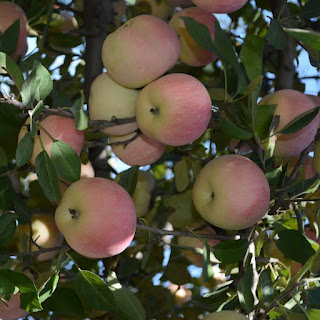Tomato
Tomato A Species of Nightshades
Common Name:
Tomato
Botanical Name:
Solanum lycopersicum
Name Story:
Tomato:
Tomato comes from the Spanish word “tomate” which means “turgid fruit”. This word is included in part of a popular saying regarding its difference in pronunciation between American English and British English. When presented with two choices that are very similar, you might say “təˈmeɪtoʊ, təˈmɑːtoʊ", which means, just as the two pronunciation choices for the word tomato have the same meaning, the two choices are only slightly different, and so it makes no difference really which of the two you choose.
Interesting Facts:
Tomato is probably one of the cultivated fruits and vegetables with the greatest number of cultivars – over 10,000, with each growing season bringing new ones to market. The cultivar with the smallest fruit (0.2 inch - 0.4 inch, 1 g-2 g) is called "Tomberry," while the largest one is probably the "Big Zac," which can produce fruits weighing more than 3 kg.
Symbolism:
Truth, Silence, good luck, fertility, passion, a calm and gentle woman.
Scientific classification:
Genus:
Solanum - Nightshades
Family:
Solanaceae - Nightshade, Solanaceous plants, Potato
Order:
Solanales - Nightshades, bindweeds, gooseweeds, and allies
Class:
Magnoliopsida - Dicotyledons, Dicots, Eudicots
Phylum:
Tracheophyta - Vascular plants, Seed plants, Ferns, Tracheophytes.
Information:
Solanum lycopersicum is an annual or perennial herbaceous vine native to Central and South America that produces a large, juicy, edible fruit known as tomato. Today there are over 10000 cultivated varieties. Although tomato is the world’s most popular vegetable, botanically it is a fruit.
Tips from Garden Coaches:
Tomato is one of the most commonly planted vegetables. It can be planted in gardens or flowerpots and needs little care.
Characteristics:
Plant Type: Herb
Lifespan: Annual, Perennial
Bloom Time: Summer, Fall
Plant Height: 3 to 10 feet
Spread: 5 feet
Flower Size: 0.8 to 1 inch
Habitat: Yards, gardens, farms
Flower Color: Yellow٫Gold
Leaf Color: Green
Fruit Color: Red٫ Green٫ Burgundy٫ Yellow٫ Purple٫ Orange٫ Gold ٫ Lavender٫ Pink
Stem Color: Green
Conditions Requirement:
Difficulty Rating:
Tomato is super easy to take care of, with resistance to almost all pests and diseases. It is a perfect option for gardeners with brown thumbs.
Sunlight
Full sun, Partial sun
Hardiness
30 ℉
Hardiness Zones
2 to 10
Soil
Sand, Loam, Clay, Acidic, Neutral
Care Guide:
Water:
The tomato should be watered very often in the active growing season during the late spring and summer months.
Depending on how much sunlight and heat they receive, it is advisible to water these plants at most daily or at least twice weekly.
The soil should be kept consistently moist without becoming wet or soggy.
Fertilization:
Fertilization once every 2-3 months during the growing season.
Pruning:
Trim the dead, diseased, overgrown branches in winter.
Planting Time:
Spring, Winter
Harvest Time:
Summer, Fall
Propagation:
Cutting, Layering, Sowing
Potting Suggestions:
Needs excellent drainage in pots.
Pests and Diseases:
Whiteflies, cotton bollworms, aphids, tomato brake leaf virus, stripe virus, mosaic disease, leaf mold, late blight, grey mold, early blight, anthracnose, leaf spot, colorado potato beetles, leaf miners.
Uses:
Garden Use:
The common tomato can be found in vegetable gardens across the world. Able to be grown in almost any space, the tomato is considered a staple in home food gardens and is usually the one of the first plants suggested to new vegetable gardeners, though it can be a bit tricky. Basil, parsley, and garlic are suggested companion plants.




Comments
Post a Comment